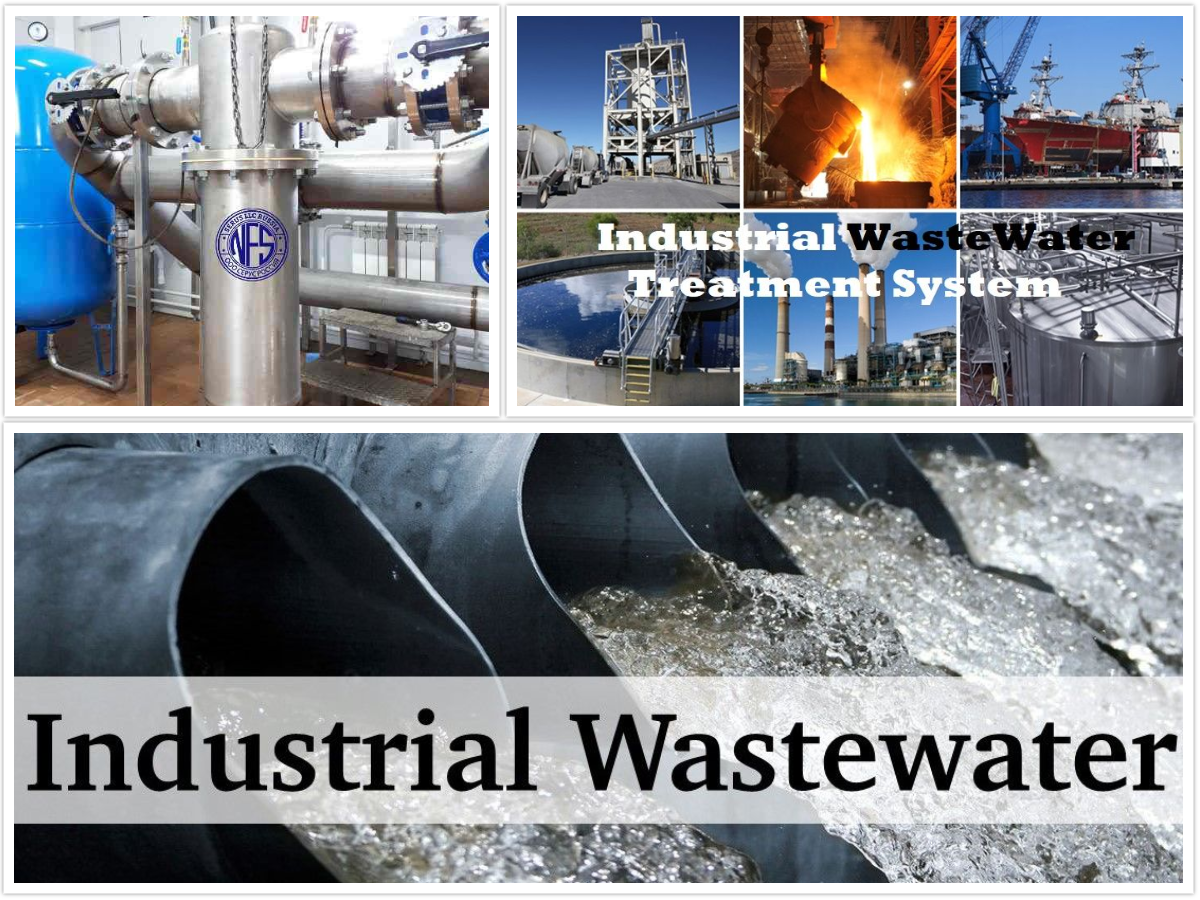Industrial Waste Water Treatment-- Industrial-Grade Water Filtration and Filtering Solutions
Innovations and Breakthroughs in Hazardous Waste Water Treatment Technologies
The landscape of commercial wastewater therapy is undertaking a transformative change, driven by advancements that enhance both effectiveness and sustainability. As governing requirements develop, the assimilation of AI and maker knowing into wastewater administration systems promises to enhance operations and ensure compliance.
Review of Waste Water Therapy Technologies
Wastewater treatment technologies incorporate a variety of techniques created to get rid of contaminants from industrial effluents before their launch into the setting. These innovations are crucial for keeping eco-friendly equilibrium and making sure compliance with environmental laws. The primary classifications of wastewater therapy include physical, chemical, and biological techniques, each offering distinct purposes based on the nature of the impurities present.

Organic treatment methods utilize microbes to degrade raw material, making them especially reliable for organic-rich effluents. Strategies like activated sludge and biofilm reactors harness the natural deterioration capacities of bacteria, resulting in significant reductions in biochemical oxygen need (BOD)
Advanced Purification Methods
Advanced filtration methods represent a crucial advancement in the realm of industrial wastewater treatment, enhancing the efficiency of pollutant removal procedures. Industrial Waste Water Treatment. These techniques incorporate a variety of modern technologies, including microfiltration, ultrafiltration, nanofiltration, and turn around osmosis, which provide consecutive barriers for different fragment dimensions and chemical frameworks
Microfiltration and ultrafiltration make use of membrane layer systems to eliminate suspended solids, bacteria, and larger natural particles, enhancing the high quality of effluent prior to further therapy. Nanofiltration links the void between ultrafiltration and reverse osmosis, effectively removing organic compounds and divalent ions, hence lowering the tons on downstream processes.
Reverse osmosis offers the highest degree of purification by allowing just water and little molecules to pass through its semi-permeable membrane layers, making it suitable for recovering top quality water from industrial effluents. Current developments in membrane modern technology, including the development of even more resilient and fouling-resistant products, have dramatically enhanced operational performance and decreased prices.
Integrating these advanced purification techniques not just enhances the total treatment procedure however also adds to sustainability efforts by allowing water reuse and resource healing in commercial settings. (Industrial Waste Water Treatment)
Organic Treatment Advancements

Additionally, the development of engineered biological systems, such as membrane layer bioreactors (MBRs), integrates biological therapy with advanced membrane layer filtering. This integration permits higher effluent top quality and minimized footprint, making it appropriate for space-constrained industrial centers. Developments in genetically crafted bacteria have actually likewise arised, enhancing the biodegradation of details pollutants, such as drugs and heavy steels, that are typically testing to remove.
Furthermore, the implementation of bioaugmentation methods, where advantageous germs are introduced to improve the existing organic treatment procedures, has actually shown appealing lead to improving therapy efficiency. These developments jointly represent a trend in the direction of more sustainable and reliable organic therapy approaches that can adjust to the evolving complexities of commercial wastewater streams. As sectors continue to prioritize ecological conformity, these organic developments will play an essential role in wastewater administration.

Resource Recuperation Techniques
In commercial settings, the integration of source recovery approaches has become progressively important for boosting sustainability and reducing waste. These methods concentrate on extracting useful materials and power from wastewater streams, thereby changing potential contaminants right into recyclable sources.
One popular strategy is nutrition recuperation, where nitrogen and phosphorus, typically existing in excess in wastewater, are caught and transformed into plant foods. This not just decreases ecological impacts however additionally provides a round economic situation service for farming applications. In addition, technologies such as anaerobic food digestion permit for the conversion of organic waste into biogas, an eco-friendly power source that can balance out nonrenewable fuel more info here source usage in industrial operations.
Moreover, progressed filtration and membrane innovations promote the recovery of industrial spin-offs such as salts and steels. These recouped products can be reintegrated into production processes, minimizing the demand for virgin sources.
Future Fads in Drainage Management
As industries increasingly prioritize sustainability, the future of wastewater administration is readied to go through considerable makeovers. Technical advancements, such as expert system and device knowing, will allow much more effective tracking and management of wastewater systems. These technologies can predict maintenance needs, optimize therapy procedures, and improve decision-making, eventually minimizing operational costs and environmental influence.
In addition, the assimilation of round economic climate principles will play a crucial duty in wastewater monitoring. Industries are anticipated to move towards systems that not just visit their website deal with wastewater but also recoup useful resources, such as nutrients, water, and energy. This change will certainly reduce waste and promote the reuse of products, lining up with global sustainability objectives.
Emerging treatment strategies, such as membrane bioreactors and advanced oxidation procedures, will further boost the efficiency of wastewater treatment, enabling higher high quality effluents suitable for reuse. In addition, regulative structures are likely to evolve, stressing stricter criteria for wastewater discharge and encouraging sectors to embrace innovative therapy solutions.
Final Thought
In verdict, the advancement of commercial wastewater treatment innovations shows a substantial shift towards improved effectiveness and sustainability (Industrial Waste Water Treatment). Technologies in advanced filtration techniques, biological treatments, and source healing approaches highlight the his comment is here sector's dedication to ecological stewardship.
The landscape of commercial wastewater therapy is undertaking a transformative change, driven by technologies that enhance both efficiency and sustainability.Wastewater treatment technologies encompass a range of methods designed to remove contaminants from commercial effluents prior to their launch right into the atmosphere.Taking advantage of the power of organic processes has led to significant developments in the treatment of commercial wastewater.In addition, the execution of bioaugmentation approaches, where valuable germs are presented to improve the existing biological therapy procedures, has actually shown promising outcomes in boosting treatment performance. These innovations jointly symbolize a pattern towards even more lasting and effective biological treatment techniques that can adjust to the developing complexities of commercial wastewater streams.